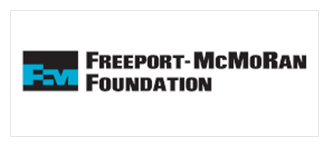A Southern Arizona Indicators/Dashboard Project FAQ
Making Action Possible (“MAP”) was formed through a unique partnership between the university, non-profit, and business community to develop a project that will measurably improve Southern Arizona through data driven collective civic action and education. The project will measure and monitor trends against a set of key performance indicators across six interest areas. The project mirrors over 125 similar projects across the country and is managed by a team representing the three major sponsors of the project, The University of Arizona, Southern Arizona Leadership Council, and Community Foundation for Southern Arizona.
“Not everything that is faced can be changed, but nothing can be changed until it is faced” -James Baldwin
“It is a capital mistake to theorize before one has data.” - Sir Arthur Conan Doyle
Currently there is no common collection of indicators in Southern Arizona used by all sectors upon which to collaborate and allocate resources. MAP is an evolution of the Southern Arizona Indicators Project. It improves on the project by providing more up to date data and analysis, as well as trend analysis on how our region compares to similar regions in the United States. The project will, for the first time, provide individuals and organizations with timely and relevant data regarding needs in the community, as well as access to research on the most effective methods to address them. MAP will help us come together as a community and provide the following:
- A common vocabulary to foster a common agenda: When government, business, and nonprofit service providers come together to solve shared problems, they need to start with a common understanding of the issues. By gathering key metrics and presenting a practical analysis, MAP will begin to bridge the divide.
- A common agenda requires shared priorities: When it is time for action, participants have to choose. MAP can be an important empirical tool in choosing a course of action.
- Shared measurement requires consistent figures: Good measurement begins with established and trusted sources of information. Data driven action is possible when data are presented consistently across years and geography. MAP will provide data about your community from trusted, reliable resources, and establish performance measures as a reference point for action.
- Measures must be updated over time: Success—or demonstrated failure that spurs a change in direction only comes from repeated measurement. MAP will maintain the information and analysis over time, ensuring that the impact of collective action can be assessed.
To measurably improve Southern Arizona through data driven collective civic action and education by:
- Changing community problem-solving and associated decision-making through the use of credible, independent, and timely data
- Helping individuals and organizations LEARN about key issues and opportunities, CONNECT with others in the community, and ACT to promote change
- Maximizing economic resources and prosperity by focusing resources more strategically on common community priorities
- Monitoring progress against similar regions and identifying needed action for improvement
MAP is administered by the University of Arizona, Eller College of Management, Economic and Business Research Center (EBRC). For over 60 years, EBRC has provided information and research on the economy that is vital to decision makers in both the public and private sectors. EBRC's publications and websites have been nationally recognized for excellence.
MAP was built as a tool for every community member throughout Southern Arizona. Since data will be collected for all counties, MAP will provide a usable tool for all communities regardless of size or geographic location.
MAP has data on every county in Arizona in six key focus areas: Economy, Workforce & Demographics, Quality of Place, Health & Social Well-Being, Infrastructure, and Education. Within each focus area there are a series of indicators. The focus areas and indicators will evolve over time. For example, in Education MAP will measure:
- College Major
- Educational Attainment
- High School Graduation Rates
- PreK-12 Enrollment
- Student Achievement
- Teacher Wages
Each landing page contains a series of visuals that accomplish the following:
- Rank our performance in relation to 12 comparable Metropolitan Areas
- Present key measures in relation to the state and the nation
- Clearly articulate regional trends in relation to state and national trends
- Selected graphs will contain a user friendly interface to explore complex datasets with ease
The focus of the MAP dashboard is Southern Arizona. Each visual presents a measure of how we are performing in relation to 12 western MSAs, 10 western states and the nation.
A metropolitan statistical area (MSA) delineates a local labor market, using counties as the basic building blocks. It consists of a core county (or counties) which contain a large population concentration (urbanized area or city), along with contiguous counties that share a high degree of economic integration with the core. Economic integration is measured by flows of residents commuting to work. Each metropolitan statistical area must contain an urbanized area with at least 50,000 residents.
MAP uses a technology (called dataZoa) that allows one dataset update from its source to propagate automatically throughout the site—a technology that allows the MAP dashboard to distinguish itself by its accuracy and volume of data presented. Data updates will follow their release by each source and will take place periodically throughout the year.
MAP data has been collected from a myriad of public and private sources including the U.S. Census Bureau, Bureau of Labor Statistics, and the Bureau of Economic Analysis. For a complete list see our Data Updates and Sources page.
To receive updates on MAP visit our subscribe page. Specific questions about data and methods used can be addressed to one of our researchers.
Imagine Greater Tucson created a shared vision for the Tucson Metropolitan region. MAP provides the data of where we are. Our challenge as a community is to drive collective civic action to move the needle from where we are (MAP) to where we want to be (IGT). MAP will begin with an analysis of county wide data and compare our region to similar regions across the United States. IGT analyzed neighborhood level data in the Tucson metropolitan area.
The MAP Dashboard is a community-sponsored product with a mission to measurably improve Southern Arizona through data driven collective civic action and education. The MAP sponsors play a key role in the financial sustainability of the project. To learn about the levels and benefits of sponsorship visit the Sponsors Page.
The MAP Partners would like to thank the sponsors without their contributions this project would not be possible. To learn more about the role of the partners visit the Partners Page.
The indicators and geographies were chosen through a series of community based meetings. The community based meetings included experts from the six main categories: Economy, Education, Health & Social Well-Being, Infrastructure, Quality of Place, and Workforce & Demographics. In addition to the category meetings, input was gathered from community leaders, non-profit organizations, government officials, academic experts, and business leaders throughout the community. The final selection of indicators was determined by the Economic and Business Research Center based on the availability of data and trustworthiness of the source. Final selection was confirmed by vote among the board of advisors.












